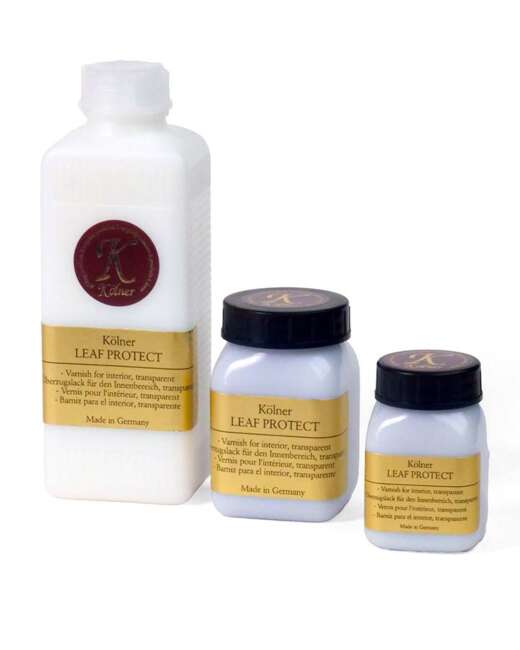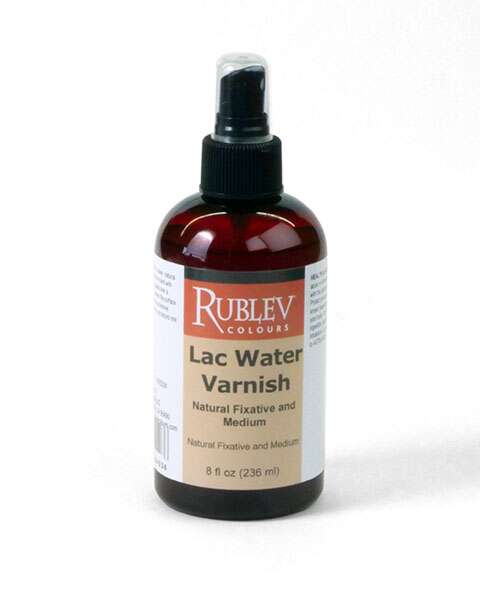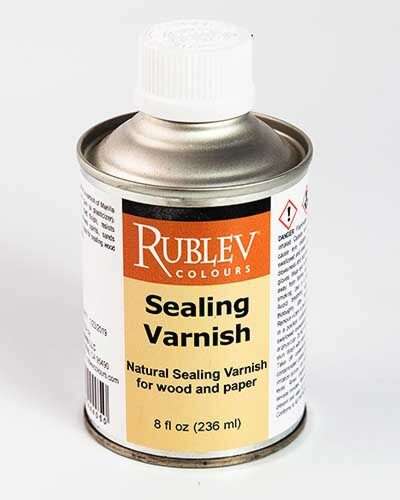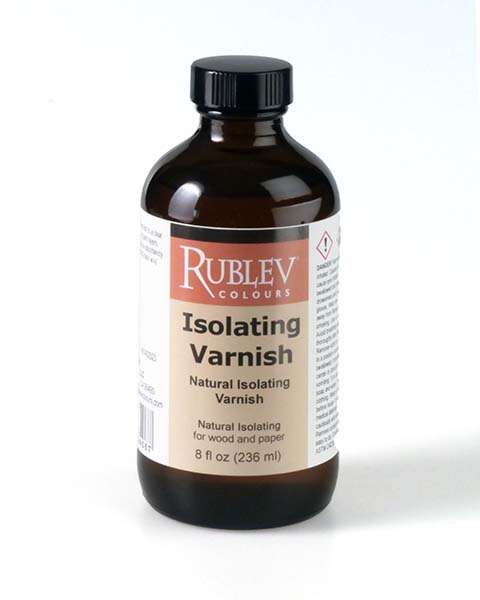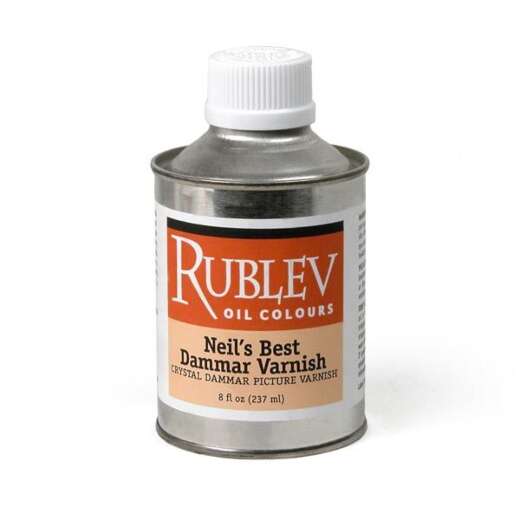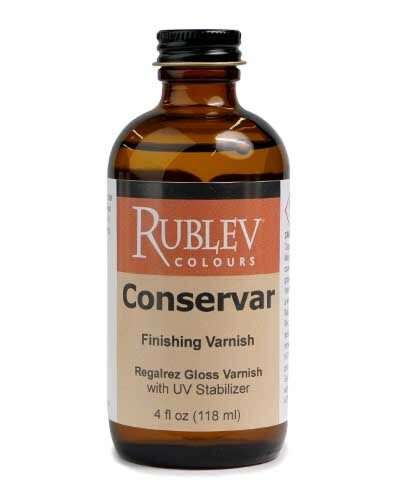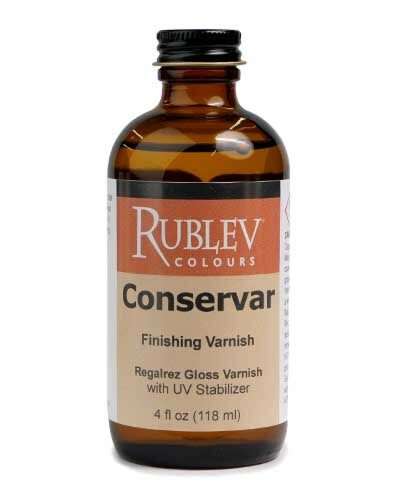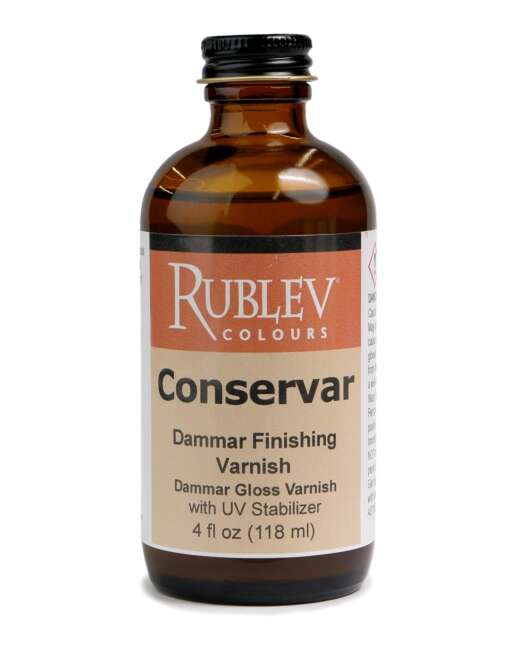The best varnish for canvas painting depends on the type of paint used and the desired finish. Acrylic varnishes are generally recommended for acrylic paintings, while oil-based varnishes are suited for oil paintings. However, acrylic varnish can also be used on oil paintings, depending on the desired appearance.
Protect Your Art: Selecting the Perfect Varnish for Your Paintings

A varnish serves several essential functions, protective as well as purely visual.
An unvarnished painting is vulnerable to dirt and dust that will eventually become embedded in the paint. It is also subject to deterioration caused by ultraviolet light, oxidation, and abrasion from handling and transport. A varnish can protect the painting from dirt, ultraviolet light, and abrasion.
Over the years, dirt and dust adhere to the varnish rather than the painting, and when the varnish has served its protective function, it can be removed and the painting re-varnished to look as good as new. Applying varnish to your painting is important to maintain its appearance and value.
If you decide to apply a varnish to your painting, you must decide on the type of varnish, method of application, and desired final appearance. The following discussion can help you make the right choice for your artwork.
Criteria for Choosing a Varnish
To begin the process, we need criteria to help select the varnish. The ideal varnish should be one that:
- Remains transparent and colorless,
- Possesses and retains adequate elasticity,
- Provides mechanical protection for the paint layer, and
- Is removable using a “gentle” and preferably non-polar solvent.
While no varnish today meets all of these criteria completely, many synthetic varnishes available provide adequate protection and a variety of surface appearances.
Before we get to the new synthetic varnishes, it is important to understand where it all started.
Natural resins, dammar, and mastic have been widely used as varnishes on paintings for many centuries. Unfortunately, these varnishes are not stable and oxidize and yellow with time. Yellowing obscures a painting and can considerably change its appearance. Consequently, varnishes have to be removed and replaced rather often, a harsh treatment that can damage the painting. It is therefore desirable to find ways to improve the performance of varnishes with respect to oxidation and, especially, yellowing. This would reduce the number of times varnish must be replaced and protect artworks from damage resulting from varnishing.
Varnishes are usually removed by the mechanical and chemical action of a cloth or cotton swab soaked in solvent. Polar solvents (e.g., acetone and alcohol are polar solvents) are needed to remove old and oxidized varnish, such as those of dammar and mastic. This treatment may damage a painting by swelling the paint layers underneath, leading to mechanical stress and leaching components out of the paint layer, leaving an embrittled paint film. These effects are even more pronounced when a new varnish is applied, which is not surprising since the amount of solvent and the time it is in contact with the paint is even greater than during removal. Consequently, the solvent of a new varnish should be as apolar as possible to minimize these effects.
Physical Characteristics of Varnish—How it affects your artwork
An ideal varnish should be non-polar and stable and should not oxidize or yellow. Unfortunately, the opposite is true: commonly used varnish materials, natural resins such as dammar, are unstable, oxidize very quickly and yellow considerably. Thus they need to be replaced regularly.
The market for synthetic polymers in the past century produced a broad range of resins that seemed very promising for use as varnishes in the field of conservation: the polymers are very stable, not prone to yellowing, and their composition is much more defined and less variable as in natural resins.
Initial experience with high molecular weight (HMW) polymers (e.g., polyvinyl acetate, polyester, and acrylic polymers) was disappointing. The varnishes were found to be less stable than expected. Crosslinking resulted in aged varnishes that were difficult to dissolve or were insoluble in common solvents. Such varnishes are often very difficult to remove without severely damaging the painting.
The sheen of these polymeric varnishes was often found to be inferior to those of natural resins. They do not produce the same gloss and color saturation as traditional, natural resin varnishes.
Later in the century, new materials, low molecular weight (LMW) resins, were developed, showing great promise. Many of the problems associated with high molecular weight polymers can be avoided by using low molecular weight synthetic resins, such as ketone resins (MS2A), aldehyde resins (Laropal A81), or hydrocarbon resins (Regalrez 1094). Due to their lower molecular weights, these varnishes usually form smooth glossy surfaces and remain soluble after aging. They have many good characteristics, and some are used in commercial artist’s varnishes, such as Regalrez 1094 in Gamblin Artist’s Oil Colors Gamvar.
Although synthetic resin varnishes do not yellow considerably, the optical properties after aging are sometimes inferior to that of natural resins. Blanching seems to be a characteristic aging phenomenon of synthetic resin varnishes.
Despite the advantages of synthetic resins, natural resins, such as dammar, are still widely used in varnishes, especially among European conservators, where synthetic resins are not very popular.
Optical Characteristics of Varnish—How it looks on your painting
Another and perhaps more important consideration for selecting a varnish is its optical properties: how it saturates the colors, enhances contrast, and gives an even sheen to the painting. How the varnish makes details in a painting more visible, especially in dark passages.
The visual appearance of the varnish can be described by gloss and saturation. Gloss and saturation work in concert with one another, although they are separate phenomena. Gloss is a surface phenomenon that can be described as the degree to which a surface approaches a mirror-like appearance. Most artists think of it as the degree of shininess that a varnish imparts to the surface of a painting. Conversely, matteness can be defined as having little gloss or, more accurately, “diffuse reflection” where light is evenly scattered in every direction from the surface. The degree of glossiness or matteness depends on the ability of the varnish to level out and form a smooth surface for gloss or a microscopically rough surface for matte.
Saturation refers to the degree of depth of color a varnish can render. Although exceptions can be made, those varnishes which are the most saturating tend to be among the most glossy. The degree of saturation of varnish depends upon the interaction of three different characteristics: the varnish’s ability to level, its ability to wet the substrate, and its refractive index.
Which Varnish is Right for You?
Generally, artists choose varnishes for the optical properties they provide and if their teacher or favorite painters have used them. Here is an overview of common types of varnish resins and their physical characteristics:
Physical Characteristics
• Dammar remains one of the most popular varnishes even though newer synthetic varnishes have been introduced since its introduction in the 19th century. Dammar oxidizes, so the solvent that initially dissolves the resin will not remove it upon aging. More polar solvents are required to remove aged, oxidized dammar varnish. Aged dammar will become more polar and less soluble, so a solvent mixture of 1 part toluene and 1 part acetone may be required to remove it.
• Laropal A81 is a synthetic urea-formaldehyde resin used to make pigment pastes and as a medium for conservation colors. Accelerated aging tests have shown Laropal A81 to be one of the most stable resins available for use as a varnish (de la Rie, Lomax, Palmer, and Maines, 2002). Even after extended exposure to xenon arc lamps, in conditions simulating direct sunlight, the resin remains soluble in a mixture of aliphatic and aromatic solvents similar in proportion in which the freshly prepared varnish dissolves. While some change in the resin occurs after it has aged, this change can be essentially eliminated by adding a UV light stabilizer (de la Rie, et al., 2002), which is included in Conservar Isolating/Finishing Varnish. Laropal is insoluble in almost all purely aliphatic solvents, such as odorless mineral spirits, making it an ideal isolating varnish. It can be applied as a distinct layer below other resins as an isolating varnish. It can also be used as a final varnish.
Laropal resin has a relatively broad molecular weight distribution (polydispersibility), giving it a pleasant feel or ‘brushability.’ When brushing, it has enough viscosity to provide a feeling of control while it easily spreads out evenly. Its primary advantage is its relatively good leveling in a single application without the tendency to sink into a painting’s ‘sunken in’ or matte areas.
• Mastic is a natural resin that crosslinks upon aging, so it cannot be removed with the same solvents, such as turpentine or alcohol, that dissolve it when newly applied. Mastic is a good choice as a final picture varnish because even after aging, it can be removed with non-polar aliphatic solvents, such as odorless mineral spirits.
• MS2A is a polycyclohexanol resin made from MS2 polycyclohexanone resin. MS2A was first developed in the late 1950s at the suggestion of Garry Thomson (The National Gallery, London) and sold by Howards of Ilford in England in 1961. The polycyclohexanol resin (MS2A) exhibited less brittleness, yellowing, and oxidation than the polycyclohexanone resin (MS2).
• Paraloid B-44 (formerly called Acryloid B-44 in the United States) is a thermoplastic acrylic resin and the principal component of INCRALAC; it provides an excellent varnish of hardness, adhesion, and film toughness together with clarity and transparency.
• Paraloid B-72 (formerly called Acryloid B-72 in the United States) is a thermoplastic acrylic resin that provides an excellent varnish of hardness, adhesion, and film toughness together with clarity and transparency. Paraloid B-72 acrylic resin can be dissolved in toluene, xylene, selected esters, acetone, and methyl ethyl ketone.
• Regalrez 1094 is a synthetic hydrocarbon resin that does not crosslink upon aging, so it is easily removable with the same solvents, such as odorless mineral spirits, that dissolve it when newly applied. Regalrez is a good choice as a final picture varnish because even after aging, it can be removed with non-polar aliphatic solvents, such as odorless mineral spirits.
Optical Characteristics
The appearance of varnishes can be primarily described as gloss or matte and every sheen in between:
• Gloss varnishes are chosen because they provide the deepest and most saturated colors, but artworks with gloss varnish have a lot of reflection.
• Matte varnishes avoid reflections, but the colors appear duller.
Here is an overview of some types of varnish resins and their optical characteristics:
• Regalrez resin consists of small molecules with a very low polydispersity (the mixture of low molecular weight and polymeric material), so it saturates very well and is glossy. The low molecular weight of Regalrez gives the varnish a high gloss, so it may not be the best choice when a truly matte surface is desired.
• Dammar consists of a wide range of molecules, so it saturates well but not to the same degree as Regalrez. It gives glossy surfaces similar to that of Regalrez.
Dammar varnish yellows considerably as it ages and has a predicted life span between 25 to 50 years. This can be lengthened with the addition of UV light stabilizers (known as ‘hindered amine light stabilizers’ or HALS), such as Tinuvin 292. UV light stabilizers interfere with oxidation reactions, producing a much more stable varnish. However, this only works in the absence of ultraviolet light, so adding these stabilizers to dammar makes sense in environments without ultraviolet light.
• Laropal can be described as having a slightly satin-like gloss compared to natural resin varnishes, such as dammar. It saturates colors and dammar but not quite as well as Regalrez and is considerably less glossy.
An Important Caveat
The appearance of varnishes depends on many factors, such as the concentration of the resin (dilution), the type of solvent incorporated, and how it is applied—brushing or spraying. All low molecular weight resins potentially can produce high gloss, but low gloss and even a matte appearance can be obtained with all of them.
The following varnishes with their resin noted give these surface appearances:

The Choice is Ultimately Yours
Unfortunately, choosing a varnish cannot be done by formula. There are many considerations, such as the physical nature of the artwork. More importantly, the appearance of the painting is greatly altered by the final coating, so it becomes an aesthetic decision that only you, as the artist, can make.
Perhaps the best way to select a varnish is to test several different varnishes on a test piece, such as an old painting you made and wanted to discard but could not muster the nerve to toss it out. Apply the different varnishes in bands across the test piece and then judge the appearance of each varnish side by side on your painting. Select the one you like and go with it. Yes, it’s an investment to purchase several varnishes, but once it is done, you are set for a long time.
A Few Shortcuts
Your choice of varnish will be dictated by whether you want a glossy, satin, or matte sheen on your painting. Most artists immediately reach for the matte varnish when they want matte surfaces. But this is not always the best solution because the varnish that creates a more matte surface may not have the needed physical properties.

Conservar Varnishes
Conservar varnishes are new varnishes from Natural Pigments based on current conservation practice and provide artists more choices for protecting their artwork. The Conservar range of varnishes consists of natural or synthetic resins optimized with UV light stabilizers that will not yellow and crosslink for the most prolonged periods possible for these varnish types.
All Conservar varnishes can be used on oil or alkyd paintings. However, all are designed with specific applications in mind. (Some Conservar varnishes may be suitable as a varnish on acrylic paintings, but consult with the manufacturer of the acrylic paint for their recommendations for varnishing acrylic paintings.) Here is a brief overview of the different kinds of Conservar varnishes offered by Natural Pigments:
Conservar Dammar Finishing Varnish
Conservar Dammar Finishing Varnish: Dammar is the most common varnish in use since the 19th century that gives a very high gloss. Rublev Colours offers this natural resin in several varnish formulations, such as the traditional five-pound cut in turpentine (Neil’s Best Dammar Varnish) if you want to use it for mediums (which we do not recommend) and as a traditional picture varnish (Dammar Picture Varnish) in petroleum solvents. However, the best form of this varnish is Conservar Dammar Finishing Varnish, dammar resin dissolved in pure, low-aromatic solvents with a UV light stabilizer. While dammar is a popular varnish, stronger and more polar solvents will be needed to remove it as it ages.
Learn more about Conservar Dammar Finishing Varnish
Conservar Finishing Varnish
Conservar Finishing Varnish is a colorless, reversible varnish made from hydrogenated hydrocarbon (Regalrez 1094) resin dissolved in a pure, low-aromatic solvent and UV light stabilizer. Conservar will not crosslink or yellow over 100 years, as shown by tests conducted at the National Gallery, Washington, D.C. Conservar achieves optimum wetting of the paint surface to enhance and bring out colors, has a minimum solvent action on paint, and maximum resin content for best coverage. It dries to a film that levels well and can be rubbed when dry, just like mastic or dammar varnishes. The varnish can be removed with odorless mineral spirits.
Learn more about Conservar Finishing Varnish
Conservar Isolating/Finishing Varnish
Conservar Isolating/Finishing Varnish is a colorless, reversible varnish comprised of an aldehyde resin (Laropal A81) in an aromatic solvent with a UV light stabilizer. It can be used both as an isolating varnish and a final varnish. The varnish is available in two finishes: Gloss and Matte. The Matte varnish has micronized silica added to produce a varnish with less gloss. Both finishes can be blended to achieve the desired gloss level. The varnish can be removed with most any of the low-aromatic aliphatic solvents.
Learn more about Conservar Isolating/Finishing Varnish
Conservar Acrylic Varnish
Conservar Acrylic Varnish is a colorless, reversible varnish made with a methyl acrylate (Paraloid B-44) resin dissolved in pure aromatic solvents with a UV stabilizer. It can be used both as an isolating varnish and a final varnish. The varnish can be removed with suitable aromatic solvents.
Paraloid B-44 (formerly called Acryloid B-44 in the United States) is a thermoplastic acrylic resin and the principal component of INCRALAC. It provides an excellent varnish of hardness, adhesion, film toughness, and clarity and transparency. It is often blended with other resins to adjust the balance of properties required for a set purpose. Paraloid B-44 acrylic resin can be dissolved in toluene, xylene, selected esters, acetone, and methyl ethyl ketone. Paraloid B-44 is not soluble in most alcohols and aliphatic hydrocarbons as the sole solvent. It is well suited for various applications, including treated metal, copper, zinc, brass, treated aluminum, concrete, and certain plastics. While some change in the resin occurs after it has aged, this change can be eliminated by adding a UV stabilizer, which is included in Conservar Acrylic Varnish.
Paraloid B-44 is insoluble in almost all purely aliphatic solvents, such as odorless mineral spirits, making it an ideal isolating varnish. It can be used with other varnishes applied as a distinct layer, for example, below Conservar Finishing Varnish or other varnishes. Conservar Finishing Varnish remains easily removable without harming the Conservar Acrylic Varnish in the layer below. Conservar Acrylic Varnish can also be used as a final varnish that is less glossy than Conservar Finishing Varnish.
Compared to natural resin varnishes, such as dammar, Conservar Acrylic Varnish has a slightly satin-like appearance. It will not saturate colors as well as dammar or Conservar Finishing Varnish and is considerably less glossy.
Paraloid B-44 resin in Conservar Acrylic Varnish is a polymeric resin (high molecular weight), giving it a pleasant feel or ‘brushability.’ When brushing, it has enough viscosity to provide a feeling of control while it easily spreads out evenly. Its significant advantage is its relatively good leveling in a single application without the tendency to sink into matte areas of a painting.
Learn more about Conservar Acrylic Varnish
Conservar Polymeric Varnish
Conservar Polymeric Varnish is a colorless, reversible varnish made with a methyl acrylate (Paraloid B-72) resin dissolved in a common organic solvent with a UV stabilizer. It can be used both as an isolating varnish and a final varnish. The varnish can be removed with suitable solvents.
Paraloid B-72 (formerly called Acryloid B-72 in the United States) is a thermoplastic acrylic resin that provides an excellent varnish of hardness, adhesion, and film toughness together with clarity and transparency. Paraloid B-72 acrylic resin can be dissolved in toluene, xylene, selected esters, acetone, and methyl ethyl ketone. Paraloid B-72 is not soluble in most alcohols and aliphatic hydrocarbons as the sole solvent. Paraloid B-72 has been used since the 1950s in conservation as a consolidation agent and a picture varnish. Extended tests have shown it to be one of the most stable resins used to conserve works of art. While some change in the resin occurs after it has aged, this change can be eliminated by adding a UV stabilizer, which is included in Conservar Polymeric Varnish.
Note: All Conservar varnishes have the date of production printed on the label next to the item code.
Learn more about Conservar Polymeric Varnish

Conservar Varnish Kits
Conservar Varnish Kits let you prepare your varnish fresh for use right away. Why is this important, and why would anyone want to prepare their varnish? If the varnish contains UV light stabilizers, it is best not to keep it too long once mixed in a varnish solution. For this reason, it is best to prepare the varnish as needed, and this is why we offer varnishes as kits that you prepare yourself.
Each kit comes with all ingredients you need to make the varnish:
• Solvent: Aliphatic or blend of aromatic and aliphatic solvents
• Varnish resin: Regalrez 1094, Laropal A81, or Dammar
• UV light stabilizer: Tinuvin 292
• Mixing jar
• Pipette
Follow these simple directions for preparing the varnish as needed:
Remove all items from the package. Pour the solvent into the jar containing the varnish resin. Close the jar tightly, shake and allow to stand until completely dissolved (usually one to two days). Once dissolved and no remaining resin particles are visible in the jar, fill the pipette with a small amount of the solvent from the jar and release it into the small amber vial containing the UV light stabilizer. Close the vial and shake until thoroughly mixed. Pour the solvent and stabilizer mixture into the jar. If the vial is not empty, draw any remaining liquid into the pipette and release it into the jar. Stir the contents of the jar well, and the varnish is ready to use. Best used within thirty days of mixing the ingredients.
Learn more about Conservar Varnish Kits
Frequently Asked and Not-so-Frequently Asked Questions
On Applying Varnish
Q: When is it safe to varnish an oil painting?
A: The best practice is to allow the bulk of the oil paint to cure (polymerize) before applying the varnish. The typical advice to wait 6 to 12 months for most paintings before varnishing makes perfect sense. This is especially true for polymeric varnishes, such as those made of acrylic resins.
For low molecular weight resins, such as Regalrez, it may be possible to apply when the paint film has reached the “dry-through” stage. This term is used in the ASTM standard describing test methods for drying time of organic coatings. Please note that the more the oil paint is allowed to polymerize or cure the more likely the varnish application will be successful. Always test the application of varnish on test pieces first to determine the suitability of the varnish for your application.
Q: Some manufacturers say their varnish can be applied when the oil painting is determined to be dry by a fingernail test? Is this correct?
A: In the author’s opinion the “fingernail test” described by some may give either false positives or negatives and does not take into consideration other factors, such as the solubility of the paint film. It is quite possible to make a mark in a paint film with a hard object, such as a fingernail, at nearly any stage of its drying, even after many years, because the hardness of the coating is largely dependent upon the pigment volume content of the paint film.
The best practice is to wait 6 to 12 months before applying a varnish. Oil and alkyd paint films need time (typically months) to polymerize or cure and form a resilient film otherwise a coating added on top of an improperly cured film may cause the layers beneath to swell and loosen.
It may be possible to apply low molecular weight resins (e.g., Regalrez 1094 and Laropal A81 in Conservar Finishing Varnish and Conservar Isolating/Finishing Varnish, respectively) when the thickest areas of your painting are “dry-through”—not touch dry. This is an important distinction that many misinterpret. To determine if your painting is dry-through, press into the thickest area of your painting with your thumb at the same time twisting it a full 90° on the paint film. If your painting is on a flexible support, such as stretched canvas, be certain to provide support to the opposite side. The paint is considered dry-through when there is no loosening, detachment, wrinkling, or other of distortion visible on the paint surface. This procedure is fully described in the ASTM Standard D1640: Standard Test Methods for Drying, Curing, or Film Formation of Organic Coatings at Room Temperature.
Please note, however, that the more oil and alkyd paint is allowed to polymerize the more likely the varnish application will be successful. Always test the application of varnish on test pieces first to determine the suitability of the varnish for your application.
Q: Can these varnishes be used successfully on casein, distemper, egg tempera, gouache, watercolor and drawings?
A: All varnishes work differently on casein, distemper, egg tempera, gouache, and watercolor paintings than on acrylic and oil paint because the varnish is absorbed by the paint and/or paper, becoming an integral part of the picture that could cause discoloration as the varnish ages. In addition, varnishes on works created using casein, distemper, egg tempera, gouache, and watercolor cannot be removed because they become an integral part of the paint layer.
To varnish casein, distemper, egg tempera, gouache, watercolor and drawings, apply an isolating coating of a polymeric varnish (e.g., Paraloid B-72, Mowilith 20, etc.) or one containing Laropal A81 (e.g., Conservar Isolating/Finishing Varnish) on the painting or drawing first, then apply a final picture varnish, such as Regalrez 1094 (e.g., Conservar Finishing Varnish). This varnish can be removed with solvents that will not damage the isolating coating. In this way, the final varnish can be removed without damaging the painting or drawing underneath. Remember any isolating coating becomes a permanent part of the art work since it is absorbed by the paint layer.
On Stability
Q: Varnish resins are dissolved in different solvents, such as dammar in turpentine. Is the type of solvent a factor in degradation of the paint film? How does this relate to solvent retention? What is solvent retention anyway?
A: The determining factors in paint film degradation due to leaching is the polarity of the solvent and its solubility. The chemical composition of a solvent determines the overall polarity of the solvent and its ability to dissolve materials. For example, Regalrez 1094 does not require an aromatic solvent. It dissolves in a 100% aliphatic solvent. Laropal A81, on the other hand, requires 30–40% aromatics. Dammar requires either turpentine or a blend of aromatic and aliphatic solvents. Higher aromatic solvents could cause more leaching but the aromatic content required for Laropal A81 is considered acceptable by conservators. The solvent mixture used in Conservar Isolating/Finishing Varnish (Laropal A81) is much less polar than those typically used to remove varnishes.
Due to the affinity between the solvent and the solute (the substance being dissolved such as resin or oil), small amounts of the solvent may remain in the paint for a longer period than its evaporation rate. Solvent retention is controlled by evaporation rate and diffusion rate. A solvent retained in the varnish and the painting during and after application can cause degradation of the paint film. The longer a solvent dwells the greater the risk of damage to the painting. Slower hydrocarbon solvents, such as odorless mineral spirits, may be retained longer by hydrocarbon resins such as Regalrez 1094 because of their mutual affinity. For this reason faster evaporating solvents are sometimes more desirable to reduce the dwell time of the solvent.
Q: When applying multiple coats of different varnishes superimposed one over another, are there any interactions between these coats of varnishes (e.g., low molecular weight resin over a polymeric resin)?
A: Whether varnish layers interact with one another depends on their solubilities. Conservar Finishing Varnish (Regalrez 1094) should not interact significantly with a lower layer of Conservar Isolating/Finishing Varnish (Laropal A81) or a polymeric varnish, such as Golden MSA Varnish or Liquitex Soluvar Varnish (acrylic polymers) or the resins Paraloid B-72 (acrylic) and Mowilith 20 (PVA).
Q: How effective are UV light stabilizers in varnishes prolonging the life of varnishes?
A: UV light stabilizers (known as ‘hindered amine light stabilizers’ or HALS) prolong the lifetime of varnishes dramatically. UV light stabilizers, such as Tinuvin 292, act by interfering with oxidation reactions, resulting in a much more stable varnish. Accelerated aging experiments performed at the National Gallery, Washington, D.C. indicate that the lifetime is extended greatly.
Q: How long do UV light stabilizers keep when in solution with the varnish?
A: Once UV light stabilizers are mixed in the solution of a varnish it is best to not keep it too long. One conservation scientist recommends preparing small quantities of varnish and to not keep these for more than a few weeks.
Q: Should both coats of varnish have UV light stabilizers or is it sufficient if only the top coat contains them?
A: UV light stabilizers should be in both varnish layers, as the top layer does not provide much protection for the lower layer.
On Optical Properties
Q: My painting has an uneven sheen with dull matte areas and glossy passages. What is the best procedure to give an overall sheen?
A: If a varnish made with low molecular weight resin is applied directly over the painting it may sink in and the same uneven sheen will remain. The best practice is to apply an isolating coat of a higher molecular weight resin, such as a polymeric resin. A good choice is Paraloid B-72, or a commercial varnish like Golden MSA Varnish or Liquitex Soluvar Varnish that contains polymeric resins. Another good choice is Laropal A81 applied as an isolating coat followed by a low molecular weight resin. Conservar Isolating/Finishing Varnish (Laporal A81) can be applied first followed by a final coat of Conservar Finishing Varnish (Regalrez 1094).
Q: How can one modify low molecular weight resins (e.g., Regalrez 1094, Laropal A81) to have a matte appearance?
A: A matte appearance may be obtained with a low molecular weight resin when it is applied at low concentration (diluting with the recommended solvent), by using a fast evaporating solvent and by spraying instead of brushing. Adding wax to the varnish may also be used.
Q: How does spraying a varnish produce a matte appearance?
A: Spraying a varnish may produce less gloss due to solvent loss from droplets of varnish after they exit the nozzle and before they hit the surface. Less solvent results in less leveling and a slight texture causing an overall even diffuse reflection.
On Workability
Q: When applying a varnish over a porous substrate, such as a painting with a matte surface, is it recommended to apply an isolating varnishing first to seal the surface, and on top, apply another varnish?
A: It is a good practice to seal a porous surface first with a polymeric resin, such as Paraloid B-72 (polymeric), or Laropal A81 (low molecular weight). Do not use dammar for that purpose because of its instability and besides it too may sink in. A low molecular weight resin, such as Regalrez 1094, then can be applied over the isolating layer.
Varnishes made with low molecular weight resins, including natural resins, have relatively low viscosities and may penetrate porous surfaces to a greater extent. To prevent sinking in, a polymeric resin such as Paraloid B-72 may be applied first or added to the low molecular weight resin to increase the viscosity. Laropal A81 solutions have a higher viscosity than those of Regalrez 1094 and, therefore, may not sink in as easily and can be applied as an isolating coating.
Q: It’s difficult to level and smooth brushstrokes on the surface of a newly applied varnish. How does one correct this problem?
A: The evaporation rate of the solvent can make working a surface difficult. By using a solvent with a lower evaporation rate one can work longer allowing dry brushing to smooth out the varnish.
Varnish Types Explained
Isolating Varnish | Isolating Coat | Isolation Coat
An isolation coat is a clear, non-removable coating that serves to physically separate the paint surface from the removable varnish. The isolation coat serves two purposes:
• To protect the painting if/or when the varnish is removed by separating the pigmented area of the painting from the solvents used in removal.
• To seal any absorbent areas in order to create an even surface on which to apply the varnish.
Retouching Varnish | Retouching Coat | Retouch Coat
Retouch varnish is a solution varnish greatly thinned with its solvent and applied in extremely thin films. Its purpose is to make a portion of a painting you’re working on that appears dried out or sunken in look wet again. Although this is a popular use of these varnishes, we do not recommend them. Varnishes are removable, so it is important that they not be painted over. Paint applied over the varnish would also be potentially removable and would pose a difficult problem in conservation or restoration attempts.
Finishing Varnish | Finishing Coat | Final Varnish
A final varnish is the last layer of the painting that serves to protect the paint surface from dirt and dust, the effects of ultraviolet light and oxidation, and abrasion from handling. It should remain clear and free of yellowing. It should also be easily removable with solvents that have the least effect on the painting. In other words, it is a disposable paint layer.
Frequently Asked Questions
What is the best varnish for canvas painting?
Can you use any varnish on a painting?
No, it's important to use a varnish appropriate for the paint medium. Using the wrong type of varnish can cause discoloration or damage to the painting.
Do I need to sand off all the varnish before painting?
If applying fresh paint over old varnish, light sanding may help improve adhesion. Depending on the condition and type of the existing varnish, complete removal is not always necessary.
Why not to varnish a painting?
Avoid varnishing if the paint layer is not fully cured, as it can lead to discoloration or cracking. Some artists prefer the unvarnished look to retain the paint's original texture and colors.
Why do old paintings have yellow varnish?
Old paintings can have yellow varnish due to the natural aging process of some varnish types, which may discolor over time. Environmental factors like smoke and sunlight can also contribute to yellowing.
Does varnish ruin painting?
When applied correctly and using the right type for the paint medium, varnish does not ruin paintings. It protects the surface from dust, UV rays, and environmental damage.
References and Acknowledgements
Much of the information in this article is derived from the references cited below. The author is indebted to the research done by many individuals and organizations:
Chercoles, R., B. de Tapol, A. Ordoñez and L. Domedel 2011. Low molecular weight varnishes. Interview of E. René de la Rie, National Gallery of Art, Washington, DC. Ge-Conservación Nº 2 2011;33-42.
Dietemann, P. 2003. Towards more stable natural resin varnishes for paintings—The aging of triterpenoid resins and varnishes. Doctoral Thesis. Swiss Federal Institute of Technology (ETH) Zurich.
Dietemann, P., C. Higgitt, M. Kälin, M.J. Edelmann, R. Knochenmuss, R. Zenobi. 2009. Aging and yellowing of triterpenoid resin varnishes—Influence of aging conditions and resin composition. Journal of Cultural Heritage 10 (2009):30–40.
Feller, R.L. 1958. Dammar and mastic varnishes: hardness, brittleness and change in weight upon drying. Studies in Conservation 3(4):162–74.
Feller, R.L., N. Stolow, and E.H. Jones 1985. On Picture Varnishes and their Solvents. Revised and enlarged ed. Washington, D.C.: National Gallery of Art.
Rie, E.R. de la 1987. The influence of varnishes on the appearance of paintings. Studies in Conservation 32(1):1–13.
Rie, E.R. de la 1988. Photochemical and thermal degradation of films of dammar resin. Studies in Conservation 33(2):53–70.
Rie, E.R. de la and C.W. McGlinchey 1989. Stabilized dammar picture varnish. Studies in Conservation 34(3):137–46.
Rie, E.R. de la and C.W. McGlinchey 1990. The effect of a hindered amine light stabilizer on the aging of dammar and mastic varnish in an environment free of ultraviolet light. In Cleaning, retouching and coatings: Technology and practice for easel paintings and polychrome sculpture. Preprints of the contributions to the Brussels Congress, 3–7 September 1990. J.S. Mills and P. Smith, eds. London: International Institute for Conservation of Historic and Artistic Works:160–4.
Rie, E.R. de la and C.W. McGlinchey 1990. New synthetic resins for picture varnishes. In Cleaning, retouching and coatings: Technology and practice for easel paintings and polychrome sculpture: Preprints of the contributions to the Brussels Congress, 3–7 September 1990. London: International Institute for Conservation of Historic and Artistic Works:168–73.
Rie, E.R. de la, S.Q. Lomax, M. Palmer and C.A. Maines. 2002. An investigation of the photochemical stability of films of the urea-formaldehyde resins Laropal A81 and Laropal A101. In ICOM Committee for Conservation, 13th Triennial Meeting, Rio de Janiero, 22–27 September 2002, Preprints. R. Vontobel, ed. Vol. II James & James:881–7.
For further information on the subject of varnishes, please consult Low Molecular Weight Varnishes written by Jill Whitten, Elisabeth Mention, Liisa Merz-Lê, Ruth Barach Cox, Sarah L. Fisher, Mary McGinn, Robert Proctor, Camilla Van Vooren, Michael Swicklik, Mira and Gustav Berger.



